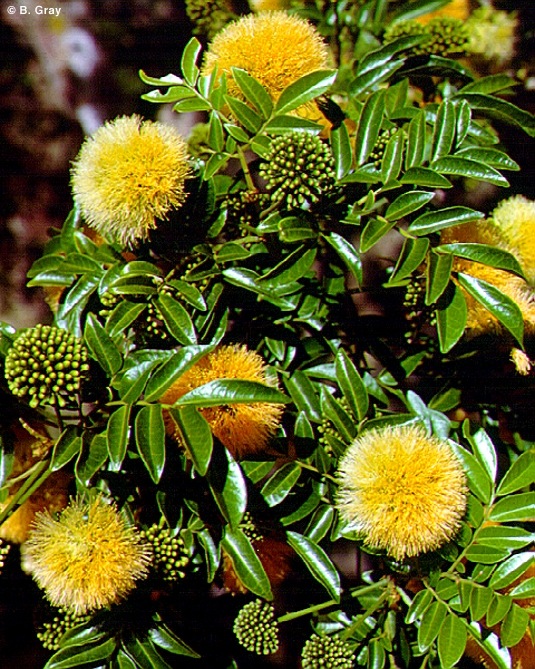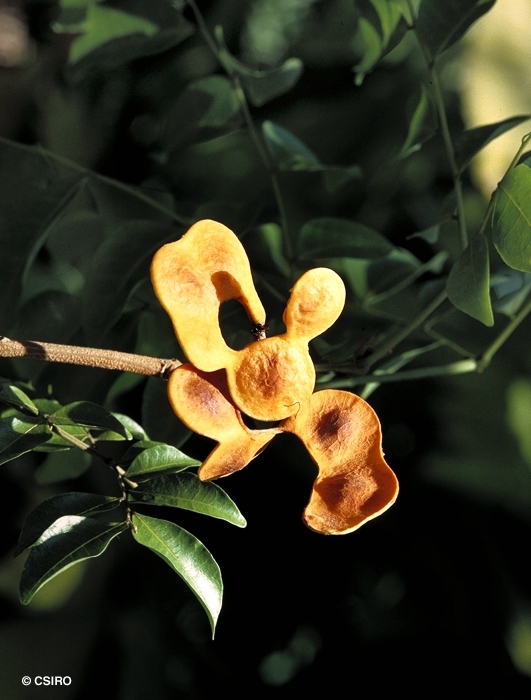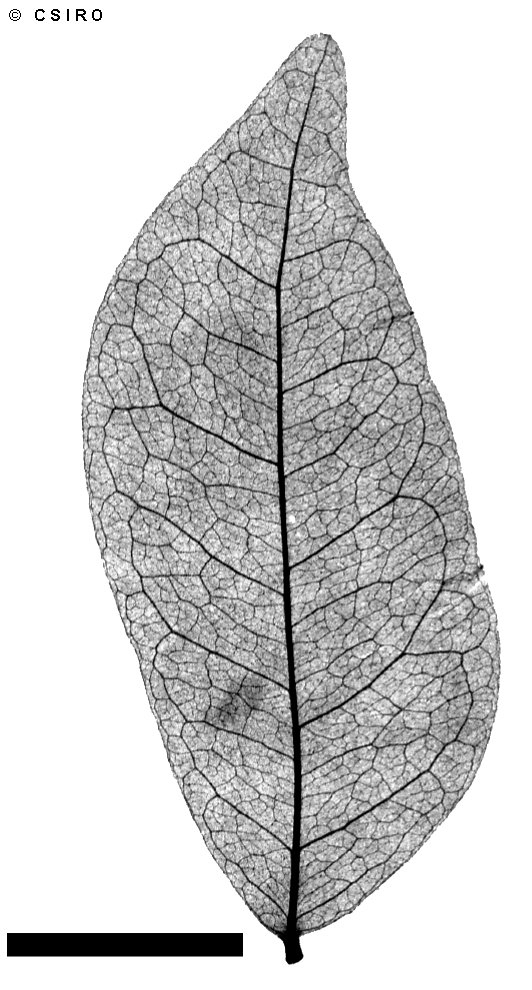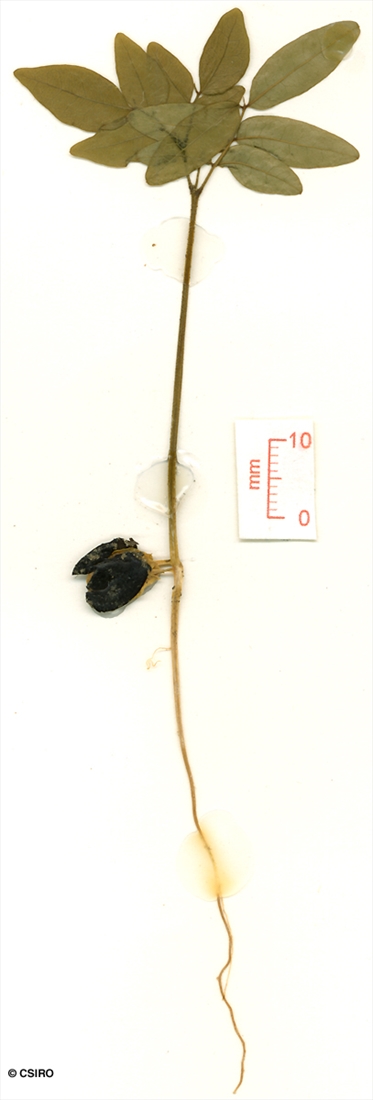Australian Tropical Rainforest Plants - Online edition
Pararchidendron pruinosum (Benth.) I.C.Nielsen






Nielsen, I.C. (1983) Adansonia 3: 328.
Tulip Siris; Monkeys Earrings; Snowwood; Stinkwood; Siris, Tulip
A cream or pale brown layer may be visible beneath the subrhytidome layer but outside the outer blaze.
Pedicels about 4-5 mm long, almost as long as the corolla. Pedicel, calyx and corolla pubescent on the outer surface. Peduncles about 3-6 cm long. Corolla tube about 4 mm long, corolla lobes about 1-1.5 mm long. Staminal filaments about 5-10 mm long, fused to form a tube in the lower half, but free in the upper half. Ovary stalked, ovules about 15.
Pods flat, about 10-15 mm wide, but often constricted between the seeds, usually in a flat spiral before maturity, but becoming twisted at opening. Pods orange-brown on the inner surface. Seeds +/- turgid, about 6 x 5 mm, marked by a pleurogram.
At the tenth leaf stage: leaflet blades ovate, apex acuminate, base cuneate, unequal-sided, upper surface hairy along the midrib; petiole and rhachis of compound leaf clothed in short tortuous hairs; glands normally visible on the upper surface of the secondary axes near the point of attachment of the terminal leaflets. Stipules linear-triangular, hairy. Stem and terminal bud clothed in pale brown hairs. Seed germination time 11 to 30 days.
An excellent small tree for street plantings, parks or as a feature in a larger garden. The fragrant flowers are in ball-like heads, golden yellow and darkening with age.
Produces a decorative general purpose timber.
Wood specific gravity 0.61. Cause et al. (1989).





